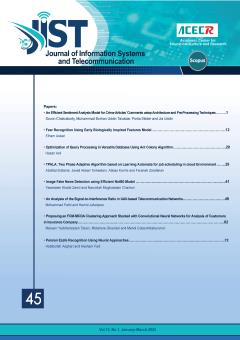New technologies and their uses have always had complex economic, social, cultural, and legal implications, with accompanying concerns about negative consequences. So it will probably be with the IoT and their use of data and attendant location privacy concerns. It must
More
New technologies and their uses have always had complex economic, social, cultural, and legal implications, with accompanying concerns about negative consequences. So it will probably be with the IoT and their use of data and attendant location privacy concerns. It must be recognized that management and control of information privacy may not be sufficient according to traditional user and public preferences. Society may need to balance the benefits of increased capabilities and efficiencies of the IoT against a possibly inevitably increased visibility into everyday business processes and personal activities. Much as people have come to accept increased sharing of personal information on the Web in exchange for better shopping experiences and other advantages, they may be willing to accept increased prevalence and reduced privacy of information. Because information is a large component of IoT information, and concerns about its privacy are critical to widespread adoption and confidence, privacy issues must be effectively addressed. The purpose of this paper is which looks at five phases of information flow, involving sensing, identification, storage, processing, and sharing of this information in technical, social, and legal contexts, in the IoT and three areas of privacy controls that may be considered to manage those flows, will be helpful to practitioners and researchers when evaluating the issues involved as the technology advances.
Manuscript profile


